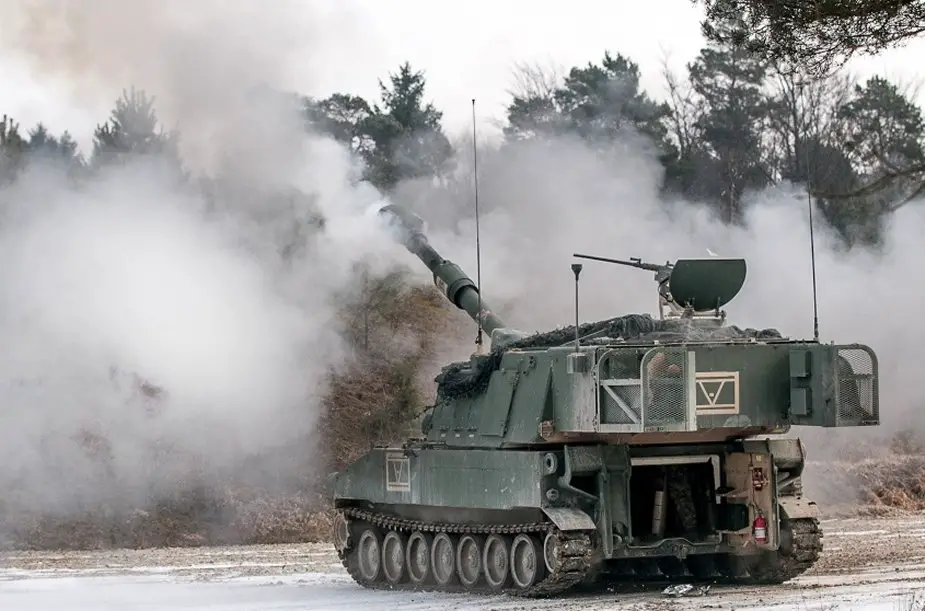U.S. Army demonstrates extended ranges for precision munitions
The U.S. Army recently demonstrated extended ranges for the guided multiple launch rocket system, and two 155mm cannon artillery precision munitions. Aligning with the Army's top priority -- Long-Range Precision Fires --- these changes support the force's need for both close and deep-strike capabilities against a near-peer adversary. Devon L. Suits, Army News Service, reports.

M109A6 Paladin of the 1st Bn, 7th Field Arty Rgt, 2nd Armored Bde Combat Team, 1st Inf. Div., firing a 155mm round (Picture source: U.S. Army / Spc. Dustin D. Biven, 22nd Mobile Public Affairs Detachment)
Last fall, the U.S. Army conducted demonstrations of the new XM1113 and Excalibur M982 munitions from a prototype Extended Range Cannon Artillery, or ERCA self-propelled howitzer. The XM1113 Insensitive Munition High Explosive Rocket Assisted Projectile is slated to replace the Army's aging M549A1 rounds. Currently, the M549 rounds can reach about 30 km. The XM1113 reached 72 km during a demonstration, said Rich Granitzki, Long-Range Precision Fires Science and Technology Advisor for Combat Capabilities Development Command, or CCDC, at Picatinny Arsenal, New Jersey.
Similarly, the Excalibur M982 is a Global Positioning System-guided, extended-range artillery projectile, supporting the Army's next generation of cannon artillery. During a limited-range test, the M982 exhibited an increase in range, going from 40 to 62 km, Granitzki added.
Moving forward, ammo modernization and improvements to cannon technologies will play a vital role in optimizing these and other armaments technologies to reach "extended ranges and to get increased rates of fire," Granitzki said. "We are still maturing our demonstrators, component technology and subsystems, in advance of future demonstrations to transition our systems to programs of record," he added.
GMLRS
The Army has also made improvements to the XM30 Guided Multiple Launch Rocket System, or GMLRS, nearly doubling its range. The current XM30 rocket is a GPS-guided high-speed rocket equipped with small wing-like controls on the nose of the projectile to enhance accuracy. The XM30 system has an advertised range of 70 km, said Mike Turner, fire support capability area lead supporting CCDC Aviation & Missile Center.
To extend the XM30's range, the Army moved the control fins to the rear of the device, Turner said. In addition to the tail controls, the Army redesigned the nose of the rocket to make it aerodynamic, equipped the device with a light-weight composite motor, and added propellant. As a result, the new Tail Controlled Guided Multiple Launch Rocket System, or TC-G, reached 139 km during a demonstration at altitude. "This takes a product that exists in the Army's inventory and nearly doubles the range," he said. "By moving the control surfaces to the rear, we're giving it more control, maneuverability, and range."
To support the new device, the Army fabricated a composite smooth-bore tube, ensuring a clean launch for the guided rocket," said Brett Wilks, a TC-G program manager. In theory, these tubes could be retrofitted to existing launch systems, resulting in no significant impact to current Army software or hardware, he added
CCDC completed the science and technology phase of the program in September 2018. The Army looks to transition the program to an initial operating capability in the next couple of years, Turner said. "It is our mission at CCDC AvMC to look at future concepts and reduce risk. We showed the Army what's capable for long-range missile systems," he added.


























